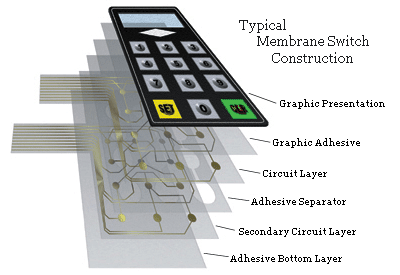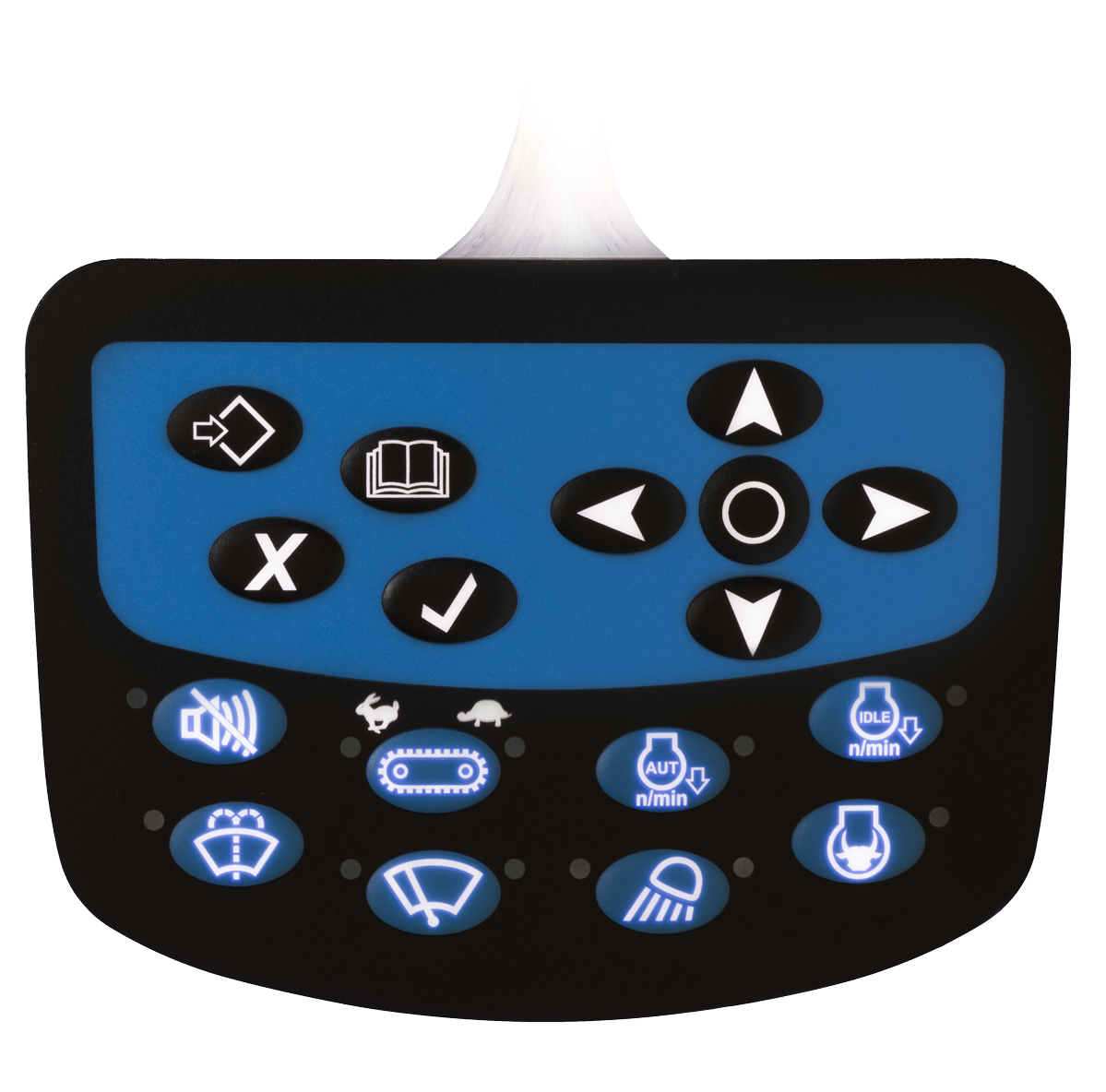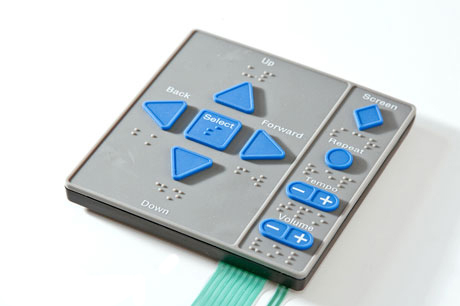Understanding the Value of Membrane Switches in Interface
Membrane switches are indispensable components in the style of reliable individual interfaces, promoting not only capability but also enhancing aesthetic charm and customer interaction. As we explore the future fads and numerous advantages linked with Membrane modern technology, it becomes clear that these buttons are extra than simply elements; they stand for a convergence of innovation and practicality.
What Are Membrane Buttons?

The spacer layer, which contains sticky homes, permits the splitting up of the circuit layer from the overlay, making certain that the switch continues to be in a non-activated state up until pushed. When pressure is applied to the overlay, it compresses the spacer layer, connecting the space and finishing the circuit in the underlying layer. This layout not just minimizes the physical space required for traditional mechanical buttons yet likewise improves the resilience of the tool, as Membrane switches are usually resistant to dirt, wetness, and other ecological aspects.
Typically found in applications varying from consumer electronic devices to clinical gadgets, Membrane switches are integral to contemporary technology, giving a user-friendly and reliable interface that straightens with modern design demands.
Advantages of Membrane Switches
While numerous switch technologies exist, Membrane Switches deal distinctive benefits that make them particularly desirable in numerous applications. Among the key benefits of Membrane buttons is their compact design, which enables for space-saving implementations in gadgets where realty is limited. Their slim profile not only improves visual charm however additionally helps with light-weight building.
Another considerable benefit is their resistance to environmental elements. Membrane buttons are generally secured against wetness, dirt, and impurities, making them ideal for usage popular atmospheres, such as clinical gadgets and commercial tools. This durability extends the life expectancy of the button, lowering upkeep costs and enhancing reliability.
Furthermore, Membrane switches can be customized to satisfy particular layout needs, including unique graphics and colors that boost individual communication. Their tactile comments alternatives can also be customized to supply a satisfying customer experience. In addition, Membrane buttons are economical, particularly in high-volume applications, as they can be created effectively.
Applications in Various Industries

In the customer electronic devices industry, Membrane buttons are prevalent in tools such as microwaves, washing machines, and remote controls. Their tactile comments and aesthetic alternatives enhance user experience while his explanation providing a sleek, contemporary appearance. In addition, automotive manufacturers use Membrane switches in control panel controls and infotainment systems, where room is limited, and individual engagement is essential.
Furthermore, the commercial field leverages Membrane switches in control panels for machinery and tools, allowing for instinctive operation in commonly harsh atmospheres. Their resistance to chemicals and moisture makes certain longevity and reliability in these applications. In general, the versatility of Membrane Switches adds considerably to their prevalent use, making them important in numerous technological domains.
Style Considerations for Membrane Switches

When designing Membrane switches, a number of vital factors to consider must be thought about to guarantee ideal capability and customer experience. To start with, the choice of materials is essential; selecting resilient, top notch substratums can boost the button's durability and resistance to ecological variables such as moisture and temperature level changes.
Second of all, the style of the graphic overlay must prioritize clarity and ease of usage. Symbols and message have to be readable, and the layout must facilitate user-friendly interaction (membrane switches). Furthermore, tactile responses is crucial; integrating a tactile dome or various other mechanisms can enhance the individual experience by providing physical confirmation of activation
One more important element is the switch's electric efficiency. Designers must make certain that the conductive traces are appropriately made to decrease resistance and prevent signal interference. This includes analyzing the required actuation force and making certain compatibility with the electronic parts they will certainly interface with.

Future Fads in Membrane Innovation
As technology remains to breakthrough, Membrane buttons are positioned to evolve substantially, driven by innovations in materials and making methods. One arising pattern is the unification of innovative materials, such as conductive inks and flexible substrates, which improve durability and minimize the total weight of Membrane switches. These products not just improve the responsive response see this page but likewise enable for the style of buttons that can hold up against harsher ecological conditions.
Additionally, the combination of touch-sensitive modern technologies is changing conventional Membrane Switches right into even more interactive interface. Capacitive touch sensing units installed within Membrane switch panels can provide an extra responsive and user-friendly individual experience, straightening with the expanding need for streamlined, modern-day layouts in customer electronics.
Additionally, innovations in printing techniques, such as digital and 3D printing, enable rapid prototyping and customization of Membrane buttons. This flexibility allows producers to react more quickly to market demands and customer choices.
Lastly, sustainability is ending up being a substantial focus, with manufacturers exploring eco-friendly products and procedures. As these fads unfold, the future of Membrane technology promises boosted capability, visual charm, and environmental duty, solidifying their role in innovative customer interfaces throughout different industries.
Conclusion
Finally, Membrane Switches represent a vital part in the layout of interface, incorporating capability with aesthetic flexibility. Their benefits, including resilience and resistance to environmental factors, make them ideal for diverse applications across various industries. Thoughtful layout considerations enhance individual interaction and experience. As advancements in technology proceed, the evolution of Membrane switches is expected to further refine interface, driving development and improving use in an increasingly complex technical landscape.
Membrane buttons are integral components in the layout of effective individual interfaces, assisting in not just performance but additionally boosting aesthetic charm and individual communication.Membrane Switches offer as an important part in various user interfaces, helping with a smooth communication in between customers and electronic tools.While various button modern technologies exist, Membrane Switches deal distinctive advantages that make them specifically desirable in different applications.Additionally, Membrane buttons can be tailored link to fulfill details layout requirements, integrating distinct graphics and colors that improve individual communication.In verdict, Membrane Switches stand for a vital element in the design of individual interfaces, integrating performance with aesthetic adaptability.
Comments on “The Benefits of Using Membrane Switches in Modern Electronics”